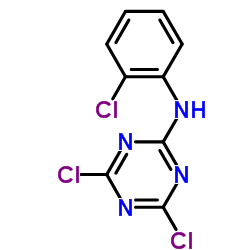Microbial release and degradation of nonextractable anilazine residues.
J Liebich, P Burauel, F Führ
Index: J. Agric. Food Chem. 47(9) , 3905-10, (1999)
Full Text: HTML
Abstract
Humic substance fractions obtained from a degraded loess soil taken from a long-term lysimeter experiment with the fungicide anilazine were incubated in aerated liquid cultures together with native soil microorganisms. Biomineralization, remobilization of [U-phenyl-(14)C]anilazine, respectively, its metabolites, and changes of the humic matrix were observed under variable nutrient conditions. Stimulated microbial activity favored the degradation of nonextractable (14)C-anilazine residues. However, nitrogen deficiency enhanced structural changes in the humic substances, which seemed to be used then as a nitrogen source. Along with the microbial degradation of the humic substances, parts of the bound anilazine residues became remobilized. Furthermore with the use of AMD-TLC, dihydroxy anilazine was detected within the nonextractable residues. The portion of rather weak bondings between the soil organic acids and the anilazine residues turned out to be considerably lower in the humic acids fractions than in the fulvic acids fraction.
Related Compounds
| Structure | Name/CAS No. | Molecular Formula | Articles |
|---|---|---|---|
 |
anilazine
CAS:101-05-3 |
C9H5Cl3N4 |
|
Long-term persistence of various 14C-labeled pesticides in s...
2012-09-01 [Environ. Pollut. 168 , 29-36, (2012)] |
|
Dry-wet cycles increase pesticide residue release from soil.
2012-09-01 [Environ. Toxicol. Chem. 31(9) , 1941-7, (2012)] |
|
Allergic contact dermatitis from a lawn care fungicide conta...
1997-03-01 [Am. J. Contact Dermatitis 8(1) , 47-8, (1997)] |
|
An outbreak of contact dermatitis in farm workers.
1985-08-01 [J. Am. Acad. Dermatol. 13(2 Pt 1) , 220-3, (1985)] |
|
Triazines.
1994-06-17 [Toxicology 91(1) , 59-62, (1994)] |